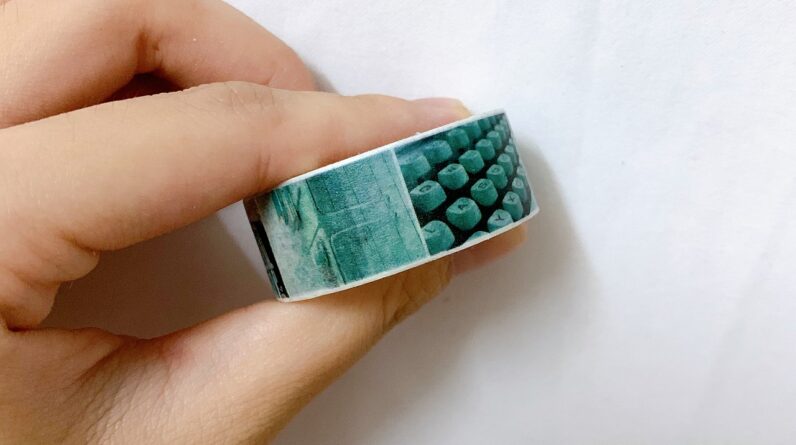
Welcome to the magical world of embroidery! In “Embroidery for Beginners: Tips and Tricks,” we dive into the colorful threads and intricate stitches that bring fabric to life. Together, we will explore essential techniques, from selecting the right materials to mastering basic stitches. Embarking on this craft is like opening a new chapter of creative expression, and we are here to guide you every step of the way. Whether our needles are just threading for the first time or our hands are already steady, isn’t it wonderful how we can create beautiful art one stitch at a time? Let’s embark on this delightful journey together.
Have you ever looked at a beautifully embroidered piece and wondered how it was made or thought about creating your own designs? Embroidery might seem daunting at first, but with some basic tips and tricks, it becomes a fun and rewarding hobby. We’re here to guide you through the essentials of embroidery for beginners, making the whole process approachable and enjoyable.
Why Choose Embroidery?
Embroidery isn’t just a craft; it’s an expressive art form that allows us to personalize almost anything. From monograms on towels to intricate designs on clothing, the possibilities are endless. Plus, it’s a relaxing activity that can be done almost anywhere.
Benefits of Embroidery
Embroidery offers various benefits, such as improving our fine motor skills, reducing stress, and providing a creative outlet. It’s also an excellent way to make personalized gifts for loved ones.
Getting Started
Before we delve into the actual stitching, it’s essential to gather the right materials. Starting with the right tools can make a big difference in your embroidery experience.
Essential Supplies
Here’s a list of the basic supplies you’ll need to get started with embroidery:
| Supplies | Description |
|---|---|
| Embroidery Hoops | Help to keep the fabric taut for easier stitching. Available in various sizes and materials. |
| Fabric | Choose a fabric that suits your project, such as cotton, linen, or even a ready-made item like a T-shirt. |
| Embroidery Floss | Stranded cotton thread available in a wide range of colors. Can be split into smaller strands for finer work. |
| Needles | Embroidery needles have a larger eye to accommodate thicker threads. Sizes vary depending on the fabric and floss. |
| Scissors | Small, sharp scissors are essential for cutting threads cleanly. |
| Pattern Transfer Tools | Use water-soluble pens, carbon paper, or iron-on transfers to get your design onto the fabric. |
Choosing Your First Project
Picking a simple project for beginners is crucial to keep motivation high. We recommend starting with a small design, perhaps something like a simple floral pattern or a monogram. It’s essential to pick a project that you’ll enjoy working on, which keeps the excitement alive.

Basic Stitches
Embroidery is all about stitches, and learning a few fundamental ones will open up a world of possibilities.
Running Stitch
The running stitch is one of the simplest stitches and is often used for outlining.
- Bring the needle up through the fabric at point A.
- Insert the needle at point B and pull through to point C.
- Repeat this process keeping the stitches and spaces even.
Backstitch
A backstitch is excellent for outlining and creating straight and curved lines.
- Bring your needle up at point A.
- Insert at point B and bring up at point C, a stitch length away from B.
- Insert back at point B.
- Continue this process for a neat line.
Satin Stitch
The satin stitch fills areas with smooth stitching, ideal for creating solid shapes.
- Outline the shape you want to fill.
- Bring the needle up on one outline, and down on the opposite outline.
- Continue this process, keeping stitches close together for a smooth finish.
French Knot
French knots add a touch of dimension and are perfect for details like flower centers.
- Bring the needle up through the fabric.
- Wrap the thread around the needle twice.
- Insert the needle back close to where it came up and pull through to form a knot.
Patterns and Designs
Now that we’ve covered the basic stitches, let’s talk about creating and transferring patterns.
Finding Patterns
There are plenty of free and paid resources online where you can find embroidery patterns. Websites like Pinterest, Etsy, and even embroidery blogs offer a plethora of designs catering to all skill levels.
Transferring Patterns
Transferring a pattern to your fabric is the next step. Here’s how to do it:
- Print or draw your design: Use a regular printer or hand-draw your pattern on paper.
- Transfer medium: Depending on your fabric, choose a transfer method such as carbon paper, water-soluble pens, or iron-on transfers.
- Position: Place your pattern where you want it on your fabric.
- Trace: Transfer the design by tracing it onto the fabric using your chosen medium.

Hooping Up
Before we start stitching, proper hooping is essential for ensuring even tension on your fabric.
How to Hoop
- Loosen the screw on the outer ring of your embroidery hoop.
- Place your fabric over the inner ring.
- Position your design in the center.
- Fit the outer ring over the top and tighten the screw.
- Adjust the fabric so it is taut like a drum skin.
Tips for a Perfect Hooping
Make sure your fabric isn’t too tight or too slack. Adjust as necessary to avoid puckering once you start embroidering.
Starting and Ending Your Threads
Knowing how to start and finish your threads properly is crucial for a clean, professional look.
The Knotless Method
- Thread your needle: Use one or two strands of floss depending on your design.
- Insert needle from the front of your fabric and leave a small tail.
- Catch the tail with the next few stitches to secure it.
Ending the Thread
- Finish your final stitch and turn the fabric to the back side.
- Weave the thread under the nearby stitches.
- Cut off the excess close to the fabric.

Choosing Colors
Color choice can make or break your design. It’s not just about what looks good; consider the mood and overall aesthetic you wish to create.
Color Theory Basics
Understanding basic color theory can help us make better choices. Here are some tips:
- Complementary Colors: Colors opposite each other on the color wheel. Great for high contrast.
- Analogous Colors: Colors next to each other on the color wheel. Offer a harmonious look.
- Triadic Colors: Three colors evenly spaced around the color wheel. Provide vibrant, balanced visuals.
Experimenting with Color
Don’t be afraid to experiment with different colors. Sometimes unconventional combinations can make the most striking designs.
Caring for Embroidered Items
Once we’ve invested time and effort into creating beautiful embroidery, it’s essential to know how to care for it properly.
Washing and Drying
- Hand-wash delicate items using mild detergent.
- Avoid wringing the fabric; gently squeeze out the excess water.
- Air dry flat to avoid distorting the shape.
Storing
- Store flat or rolled to avoid creases.
- Keep out of direct sunlight to prevent fading.
Troubleshooting Common Problems
Just like any other craft, embroidery can come with its set of challenges. Here are some common issues and how to fix them.
Puckering Fabric
Puckering can occur if the fabric isn’t properly hooped or if the stitches are too tight. Re-hoop or adjust your stitching tension.
Tangled Thread
Thread tangling is a common issue. Use shorter lengths of floss and ensure the thread is smooth before starting. A thread conditioner can also help.
Uneven Stitches
Practice makes perfect. Focus on consistent spacing and tension. Using guidelines or a ruler can help with evenness.
Expanding Your Skills
Once you’ve got the basics down, there are endless ways to expand your embroidery skills.
Try Different Stitches
There are many stitches beyond the basics that can add variety and complexity to your designs. Some to try include the chain stitch, split stitch, and herringbone stitch.
Join a Community
Joining an embroidery community can offer support, inspiration, and friendship. Online forums, local craft clubs, and social media groups are great places to connect with fellow enthusiasts.
Take Classes
Many places offer workshops and classes, both in-person and online. These can be a great way to learn new techniques and get hands-on experience.
Final Thoughts
Embroidery is an age-old craft that brings so much joy and creativity into our lives. With a bit of patience and practice, anyone can create beautiful embroidered pieces. The most important thing is to enjoy the process and let your creativity shine. We hope these tips and tricks make your embroidery journey as enjoyable and fulfilling as possible. Happy stitching!







